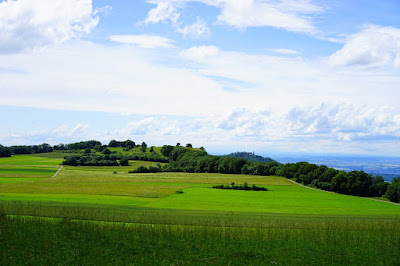Depending on where you are located, and after this hot and dry summer weather that so many of us have had, you may be thinking about reseeding your pastures. Fall is a good time to reseed, as it is a reverse of spring when it comes to planting. In fall, the ground is warmer and the air gets cooler, which is actually a better germination environment for pasture seed. There are several things to consider before you reseed your patures. Take a few soil samples and determine the pH of your soil. The ideal range would be bewteen 6.5 and 7. It is always easier to amend soil lime (if needed) or fetilizers before planting, so the new seed shave the best chance of germinating and rooting.
UMassAmherst offer the following about choosing the best pasture mixture:
"The most productive and highest quality pastures are those
that contain a mixture of grass species with one or more legume species. When
selecting species for pasture, it is important to understand both grass and
legume growths habits and match them to the soil characteristics and climate.
Fields have differing soil types, thus planting the same mixture in each field
is not advised.
The following factors will influence your choice in forage
species:
- The type and age of livestock to be grazed
- The time of year desired for pasture availability
- The seasonal distribution of pasture growth
- Soil type, drainage, water holding capacity, fertility, and pH
Legumes- provide much protein and compliment grasses
improving the quality of the pasture. Legumes also add nitrogen to the soil
nitrogen fixing bacteria making it indirectly available to grasses. Clover can
add 90-140 lbs N/ac/yr, while alfalfa is capable of adding considerably more. In
order for N fixation to occur, the legume seed must be inoculated with the
correct bacteria, or it must be seeded into a previously inoculated field.
Legumes may cause bloat in ruminants, so they should not be seeded alone for
grazing.
Grasses- provide roughage for the animals, increasing their
fiber intake. Adequate fiber is needed by grazing animals, however, if grasses
are permitted to grow for long periods especially in spring they may become
fibrous resulting in reduced animal intake and growth. Grasses, are either sod
forming or bunch types. Sod forming and those that form many tillers compete
better with weeds."
Read the entire article: Guidelines for Reseeding Pastures


No comments:
Post a Comment